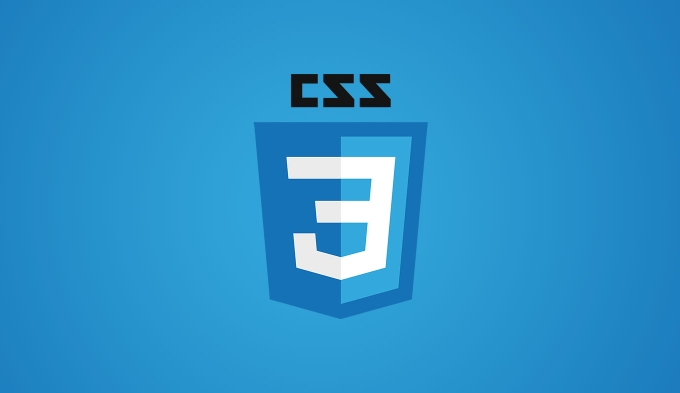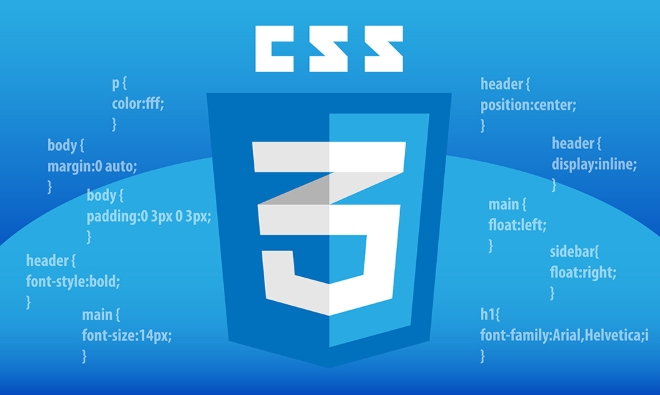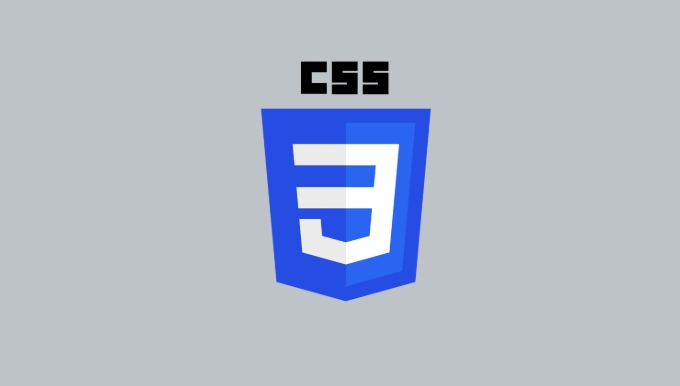Understanding and using CSS Container Queries (emerging topic)
Jul 05, 2025 am 01:06 AMCSS Container Queries is a new responsive design mechanism that allows restyling based on the size of component containers rather than viewport size. The steps to use are: 1. Define the container type through container-type, such as inline-size or size; 2. Optionally use container-name to name the container; 3. Use @container query to write corresponding style rules. Applicable scenarios include cards, toolbars, advertising modules, and other components that need to be adaptively displayed in different contexts. Notes include explicit declaration of container type, performance impact and compatibility issues. Currently, mainstream browsers have supported it but need to combine downgrade processing or progressive enhancement strategies.

In web development, responsive design has always been one of the core issues. With the advent of CSS Container Queries, we can finally adjust the style based on the container size of the component, instead of relying solely on the size of the entire viewport. This is a huge step forward for modern modular development.

What are CSS Container Queries?
CSS Container Queries is a new responsive mechanism that allows you to style an internal element based on the size of a container (rather than the entire browser window). You can mark a component as a "query container" and define different layout rules based on the size of the container.

The usage method is very simple: first use container-type to define a container type, such as inline-size or size , and then write the corresponding style rules through @container query. For example:
.widget {
container-type: inline-size;
}
@container (max-width: 300px) {
.widget {
font-size: 12px;
}
} In this way, when the width of the .widget container is less than or equal to 300px, the text inside will become smaller, achieving more flexible adaptive performance.

How to set up a container and use a query?
To use Container Queries, you must first clarify which elements are what you want to be a "container". It is usually some component-level blocks, such as cards, sidebars, or ad slots.
The setup method is as follows:
- Add
container-typeattribute to the target element, it is recommended to start withinline-sizebecause it only focuses on width. - If you need to control the width and height at the same time, you can use
sizetype, but pay attention to performance issues. - Use
container-nameto name the container, making it easier to distinguish different containers in multiple queries.
Example:
.card {
container-type: inline-size;
container-name: card-container;
}
@container card-container (max-width: 400px) {
.card-content {
flex-direction: column;
}
}In this way, even if multiple components use similar structures, their respective response behaviors can be controlled separately.
Which scenarios are suitable for using Container Queries?
Container Queries is especially suitable for components that require a consistent appearance in different contexts. For example:
- Card Component: Shows the compact version in the sidebar and the full version in the main content area.
- Toolbar or button group: Automatically switch horizontal/vertical arrangement according to available space.
- Advertising module: Hide some elements in small containers to avoid crowding.
This ability allows components to truly achieve "self-perception" and make reasonable displays without the intervention of external logic.
Notes and compatibility
Currently, mainstream browsers already support Container Queries, but the following points should still be noted in actual projects:
- Not all containers can be query objects,
container-typemust be explicitly declared. - Complex nesting can affect performance, especially when
sizetype is used. - Currently, it cannot be mixed in other places other than media queries, such as not nesting inside
@media.
If you are worried about compatibility, you can add downgrade processing logic to the code, or combine traditional media queries to make progressive enhancements.
Basically that's it. Container Queries allows components to truly have "environmental awareness" capabilities. Although it is still in the stage of popularity, it has begun to change the way we build UIs.
The above is the detailed content of Understanding and using CSS Container Queries (emerging topic). For more information, please follow other related articles on the PHP Chinese website!

Hot AI Tools

Undress AI Tool
Undress images for free

Undresser.AI Undress
AI-powered app for creating realistic nude photos

AI Clothes Remover
Online AI tool for removing clothes from photos.

Clothoff.io
AI clothes remover

Video Face Swap
Swap faces in any video effortlessly with our completely free AI face swap tool!

Hot Article

Hot Tools

Notepad++7.3.1
Easy-to-use and free code editor

SublimeText3 Chinese version
Chinese version, very easy to use

Zend Studio 13.0.1
Powerful PHP integrated development environment

Dreamweaver CS6
Visual web development tools

SublimeText3 Mac version
God-level code editing software (SublimeText3)

Hot Topics
 How can I include CSS only on some pages?
Jun 11, 2025 am 12:01 AM
How can I include CSS only on some pages?
Jun 11, 2025 am 12:01 AM
There are three ways to selectively include CSS on a specific page: 1. Inline CSS, suitable for pages that are not frequently accessed or require unique styles; 2. Load external CSS files using JavaScript conditions, suitable for situations where flexibility is required; 3. Containment on the server side, suitable for scenarios using server-side languages. This approach can optimize website performance and maintainability, but requires balance of modularity and performance.
 Flexbox vs Grid: Understanding the Key Differences in CSS Layout
Jun 10, 2025 am 12:03 AM
Flexbox vs Grid: Understanding the Key Differences in CSS Layout
Jun 10, 2025 am 12:03 AM
Flexboxisidealforone-dimensionallayouts,whileGridsuitstwo-dimensional,complexlayouts.UseFlexboxforaligningitemsinasingleaxisandGridforprecisecontroloverrowsandcolumnsinintricatedesigns.
 Creating an Auto-Closing Notification With an HTML Popover
Jun 10, 2025 am 09:45 AM
Creating an Auto-Closing Notification With an HTML Popover
Jun 10, 2025 am 09:45 AM
The HTML popover attribute transforms elements into top-layer elements that can be opened and closed with a button or JavaScript. Popovers can be dismissed a number of ways, but there is no option to auto-close them. Preethi has a technique you can u
 What is 'render-blocking CSS'?
Jun 24, 2025 am 12:42 AM
What is 'render-blocking CSS'?
Jun 24, 2025 am 12:42 AM
CSS blocks page rendering because browsers view inline and external CSS as key resources by default, especially with imported stylesheets, header large amounts of inline CSS, and unoptimized media query styles. 1. Extract critical CSS and embed it into HTML; 2. Delay loading non-critical CSS through JavaScript; 3. Use media attributes to optimize loading such as print styles; 4. Compress and merge CSS to reduce requests. It is recommended to use tools to extract key CSS, combine rel="preload" asynchronous loading, and use media delayed loading reasonably to avoid excessive splitting and complex script control.
 How to use Lotties in Figma
Jun 14, 2025 am 10:17 AM
How to use Lotties in Figma
Jun 14, 2025 am 10:17 AM
In the following tutorial, I will show you how to create Lottie animations in Figma. We'll use two colorful designs to exmplify how you can animate in Figma, and then I'll show you how to go from Figma to Lottie animations. All you need is a free Fig
 Breaking Boundaries: Building a Tangram Puzzle With (S)CSS
Jun 13, 2025 am 11:33 AM
Breaking Boundaries: Building a Tangram Puzzle With (S)CSS
Jun 13, 2025 am 11:33 AM
We put it to the test and it turns out Sass can replace JavaScript, at least when it comes to low-level logic and puzzle behavior. With nothing but maps, mixins, functions, and a whole lot of math, we managed to bring our Tangram puzzle to life, no J
 External vs. Internal CSS: What's the Best Approach?
Jun 20, 2025 am 12:45 AM
External vs. Internal CSS: What's the Best Approach?
Jun 20, 2025 am 12:45 AM
ThebestapproachforCSSdependsontheproject'sspecificneeds.Forlargerprojects,externalCSSisbetterduetomaintainabilityandreusability;forsmallerprojectsorsingle-pageapplications,internalCSSmightbemoresuitable.It'scrucialtobalanceprojectsize,performanceneed
 Does my CSS must be on lower case?
Jun 19, 2025 am 12:29 AM
Does my CSS must be on lower case?
Jun 19, 2025 am 12:29 AM
No,CSSdoesnothavetobeinlowercase.However,usinglowercaseisrecommendedfor:1)Consistencyandreadability,2)Avoidingerrorsinrelatedtechnologies,3)Potentialperformancebenefits,and4)Improvedcollaborationwithinteams.






